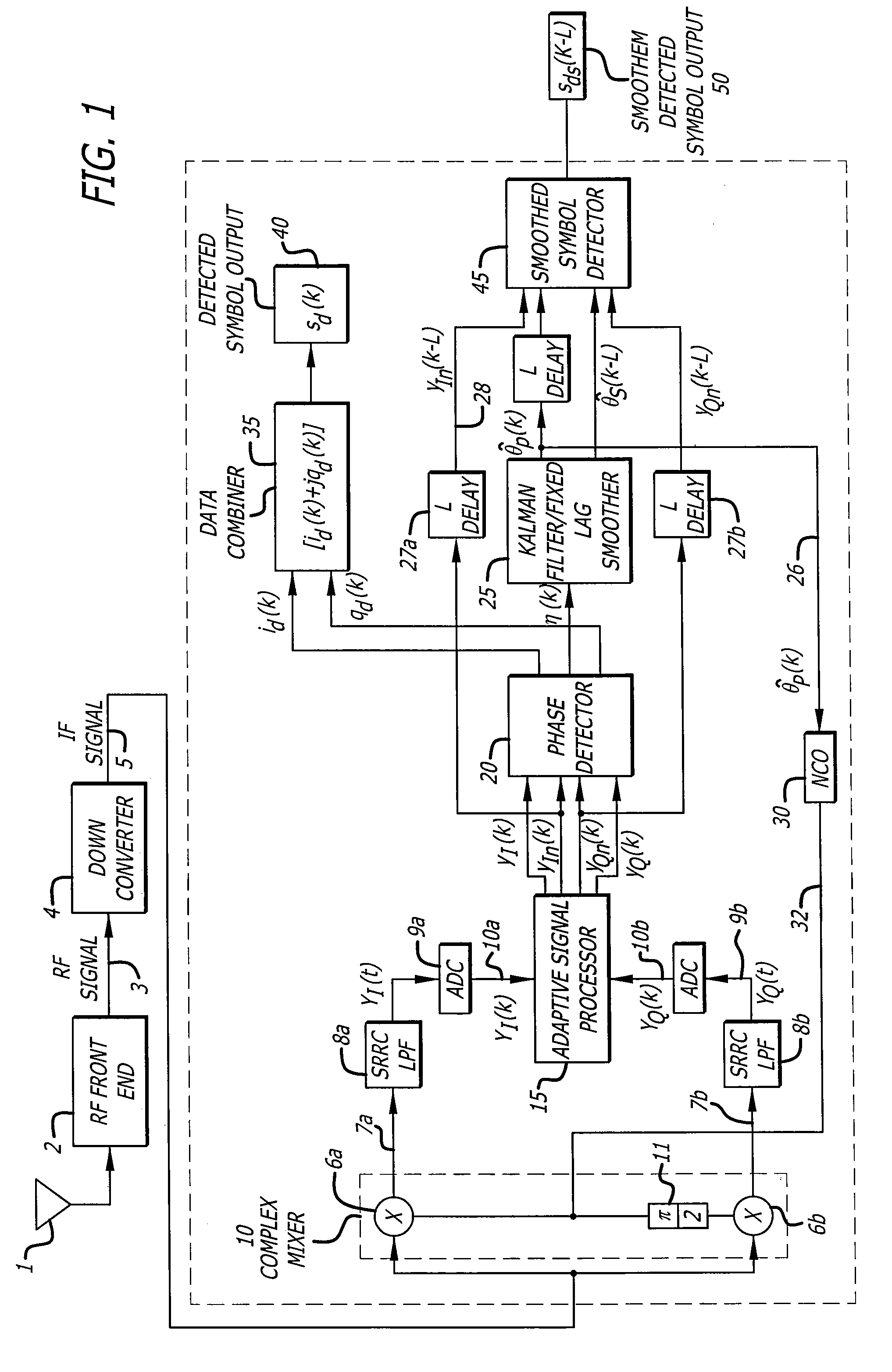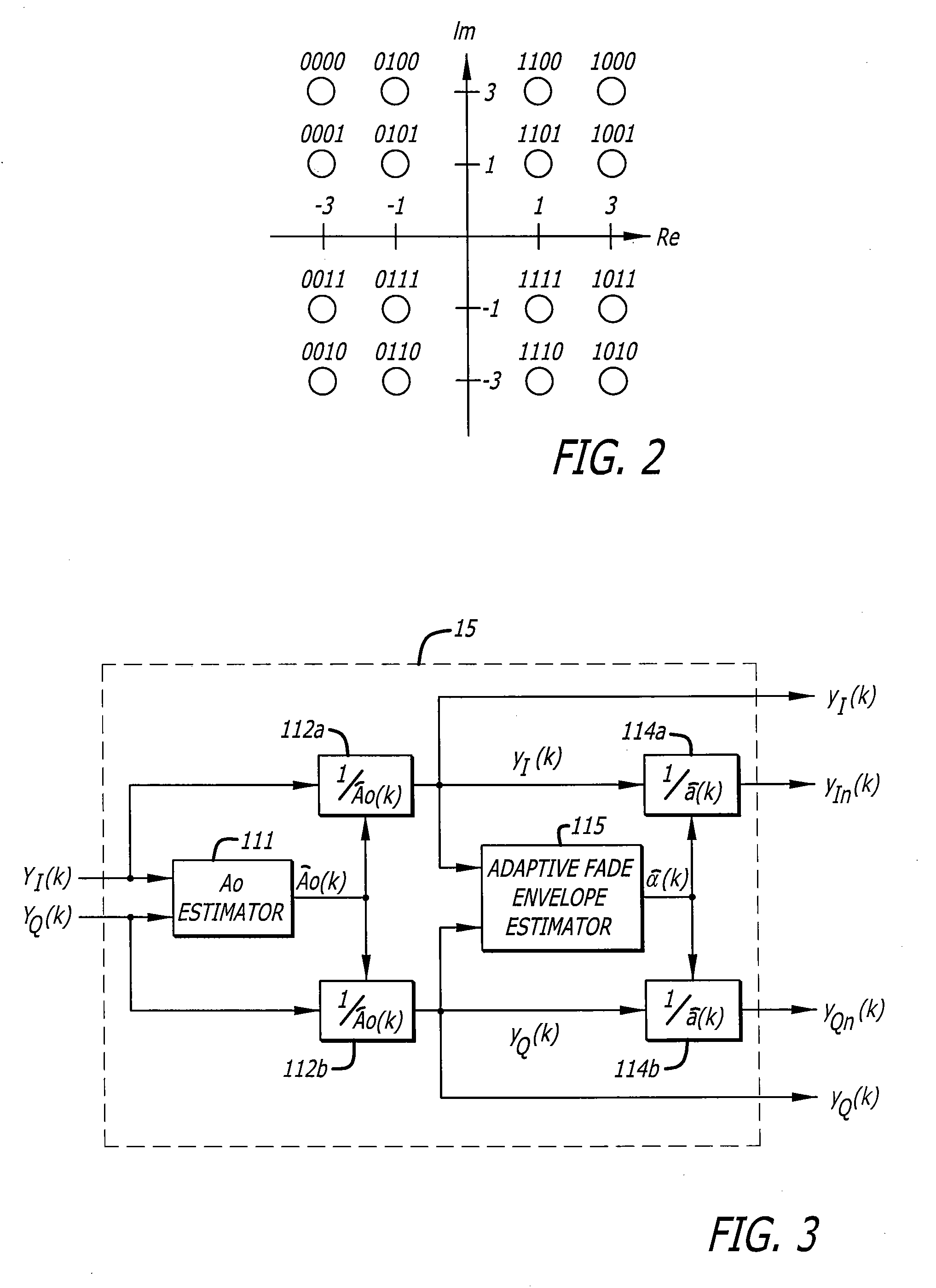Adaptive receiver for high-order modulated signals over fading channels
a receiver and channel technology, applied in the field of adaptive receivers, can solve the problems of large channel phase noise, difficult to obtain, and serious limitations in the application of mqam techniques for m greater than 4 to wireless channels, and achieve the effect of small degradation
- Summary
- Abstract
- Description
- Claims
- Application Information
AI Technical Summary
Benefits of technology
Problems solved by technology
Method used
Image
Examples
Embodiment Construction
[0032]An embodiment of the present invention as depicted in FIG. 1 is disclosed and explained in detail with the aid of reference designators in the former drawing. More particularly, the present invention concerns a novel adaptive receiver architecture and carrier recovery loop propounded for, inter alia, M-QAM modulated signals. The algorithm performs an intermediate estimate of the amplitude envelope for normalization. The cosine and sine of the phase modulation term are further reckoned and removed through simple trigonometric identities, rendering the phase error estimate applied to the loop filter input. This technique offers several advantages over conventional carrier recovery structures, such as low cost, robustness and low complexity without infusing phase jitter due to random data patterns nor long acquisition times.
[0033]An embodiment of the invention is described with reference to the drawings using reference numbers shown in the drawings. The adaptive receiver of this ...
PUM
 Login to View More
Login to View More Abstract
Description
Claims
Application Information
 Login to View More
Login to View More - R&D
- Intellectual Property
- Life Sciences
- Materials
- Tech Scout
- Unparalleled Data Quality
- Higher Quality Content
- 60% Fewer Hallucinations
Browse by: Latest US Patents, China's latest patents, Technical Efficacy Thesaurus, Application Domain, Technology Topic, Popular Technical Reports.
© 2025 PatSnap. All rights reserved.Legal|Privacy policy|Modern Slavery Act Transparency Statement|Sitemap|About US| Contact US: help@patsnap.com



